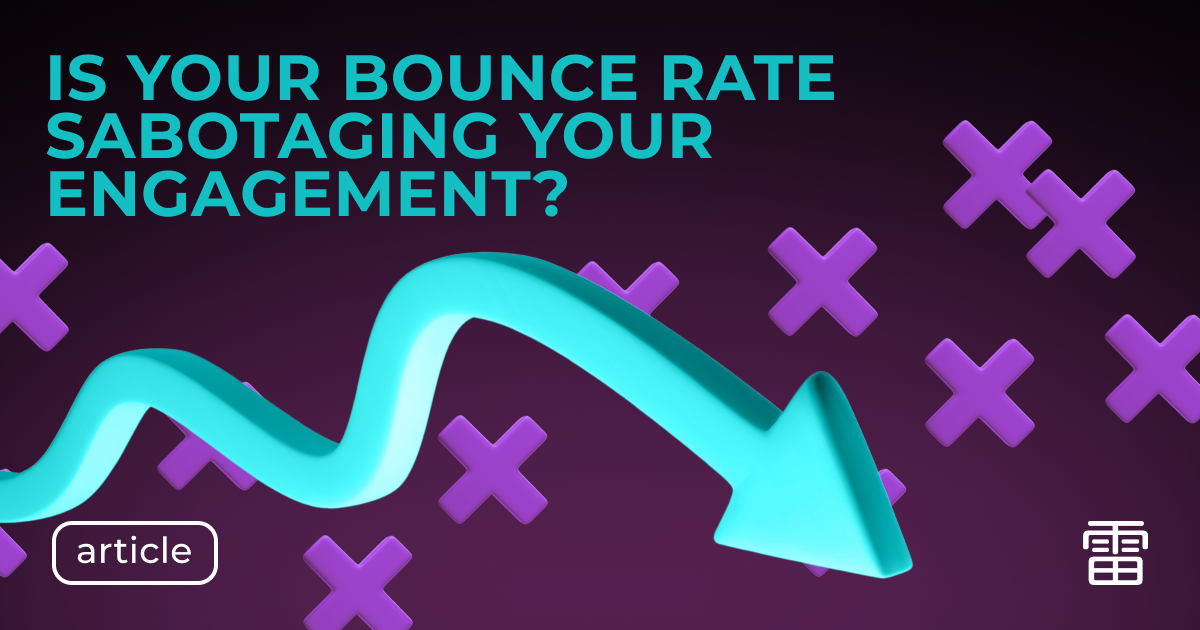If you’ve ever wondered why your customers visit your site and then leave right away, let’s figure it out together. Today, we’re talking about how Google Analytics 4 (GA4) has redefined bounce rate, what it means for your business, and how to leverage this data to improve user engagement.
What is “bounce rate”?
Simply put, bounce rate is the percentage of users who visit your site and leave without doing anything — no clicks, no scrolling, no moving to another page. In Universal Analytics (UA), this metric was a key indicator and was calculated very straightforwardly: a session without interaction was considered a bounce.
GA4, however, approaches this differently. Instead of focusing on bounces, it emphasizes engaged sessions. This shift allows you to assess true visitor interest rather than just their exits.
How is bounce rate calculated in GA4?
In GA4, bounce rate is essentially the inverse of engagement. An engaged session in GA4 is defined as one in which the user:
- Spends at least 10 seconds on the site
- Completes at least one conversion action (such as signing up or making a purchase)
- Views at least two pages
If none of these criteria are met, the session is considered a bounce. This new approach makes the metric more precise and insightful because not all exits are bad. For instance, if someone visits your site, reads an article, and leaves without clicking anything, that session could still be valuable.
Why is bounce rate still important?
Although GA4 prioritizes engagement, a high bounce rate can still indicate issues like:
- A confusing or unfriendly interface
- Content that doesn’t match user expectations
- Technical problems, such as broken links or slow loading times
- Fraudulent and bot traffic
The last point is where we excel. Bots not only inflate bounce rates but also make it harder to understand how real users interact with your content.
Why do users leave a site?
1. Usability problems. If users can’t quickly find what they need, they’ll leave. This is especially true for mobile visitors.
2. Irrelevant content. If your headline promises one thing but the content delivers something else, users will bounce.
3. Technical glitches. Slow loading times, 404 errors, or intrusive widgets can drive users away.
4. Fraud and bots. They visit, do nothing useful, and leave—messing up your analytics in the process.
How to reduce bounce rate?
Here are some practical, effective tips:
1. Speed up your site. Use Google PageSpeed Insights to identify and fix issues.
2. Create high-quality content. It should be useful and relevant. If your headline promises tips, deliver tips — not a sales pitch.
3. Optimize for mobile. In 2024, there are still sites where the text doesn’t fit the screen properly. This is unacceptable.
4. Show that you understand your audience. Use precise targeting to reach the right people.
5. Protect against fraud. Fraudulent traffic not only wastes your budget but also skews your data. At Kaminari Click, we know how to handle this issue.
Why is GA4 a step forward?
GA4 dives deeper, not just noting when users leave but analyzing why they stay. It’s a new level of analytics that helps you make decisions based on real data.
Conclusion: Leverage the power of GA4
Bounce rate in GA4 is more than just a metric — it’s a tool to understand how well your site engages your audience. Proper analytics setup, protection against fraudulent traffic, and a focus on quality content will make your advertising more effective and help you save money.
If you’re ready to make your advertising truly work, join us for a demo! At Kaminari Click, we’ll show you how to eliminate bots, protect your data, and turn your advertising into a powerful tool for business growth. Book your demo now and start saving your budget!

